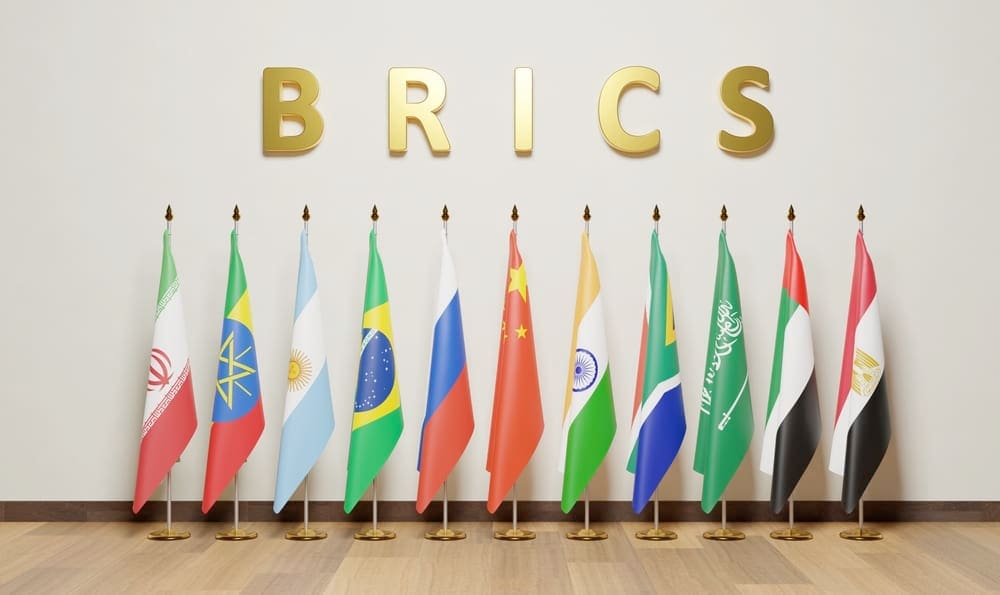In a significant step towards reducing reliance on the U.S. dollar, BRICS countries are actively working on a platform for payments in national currencies.
Russian Foreign Minister Sergey Lavrov announced it during the BRICS Foreign Ministers Meeting in Nizhny Novgorod. According to a press release from the Russian News Agency, TASS, on June 10, Lavrov stated:
“The proactive work is underway on fulfillment of decisions of the Johannesburg summit of the last year, specifically as regards improvement of the international monetary system and development of a platform for payment in national currencies in mutual trade.”
The initiative was born at the Johannesburg summit in 2023. Notably, it aims to bolster trade and lending among BRICS nations using their currencies instead of the dollar. While details on the platform’s implementation and timeline remain unclear, experts anticipate further progress during the upcoming BRICS bloc meeting in Kazan, Russia, scheduled for October 22 to 24, 2024.
BRICS payment platform and sanctions against Russia
Russia, facing significant sanctions from the U.S. and its allies, is particularly keen on moving away from the dollar. In this context, President Vladimir Putin recently highlighted that the ruble now accounts for 40% of Russia’s import and export transactions. However, the dollar’s deep-rooted presence in the global financial system poses a formidable challenge to any attempts at de-dollarization.
Christopher Granville, the managing director of global political research at GlobalData TS Lombard, suggests that the new BRICS payments system could be a digital currency system. This would enable central banks to handle local currency transactions directly.
Lavrov himself had previously touted a digital-currency-based settlement system to local media in April, as reported by Business Insider.
The United States is the dollar’s weak spot, analysts say
Despite the growing momentum behind de-dollarization efforts, analysts argue that replacing the dollar is no simple task. On that note, Jared Cohen, president of global affairs at Goldman Sachs, wrote in Foreign Policy:
“The two most significant problems for those advocating wholesale de-dollarization are that it is impossible to replace something with nothing and the United States’ competitors do not currently have the capability or will to replace the dollar, even if their rhetoric at times suggests otherwise.”
Interestingly, some experts point to American dysfunction as the primary threat to the dollar’s supremacy rather than foreign efforts. Steven B. Kamin and Mark Sobel, two think tank analysts, argue that rising political and fiscal issues within the U.S. could erode confidence in its currency. They warn that factors such as political dysfunction, runaway U.S. spending and debt, limits to Fed independence, rising trade protectionism, and threats of devaluing the dollar could amplify the risk of de-dollarization.
As the world closely monitors the BRICS nations’ efforts to establish an alternative payment platform, the U.S. must address its internal challenges and maintain the dollar’s global dominance. Thus, failure to do so could lead to market disorder, volatility, and harm to global prosperity, including America’s own interests.
The upcoming BRICS meetings and the U.S. response will be crucial in shaping the future of the global financial landscape.







